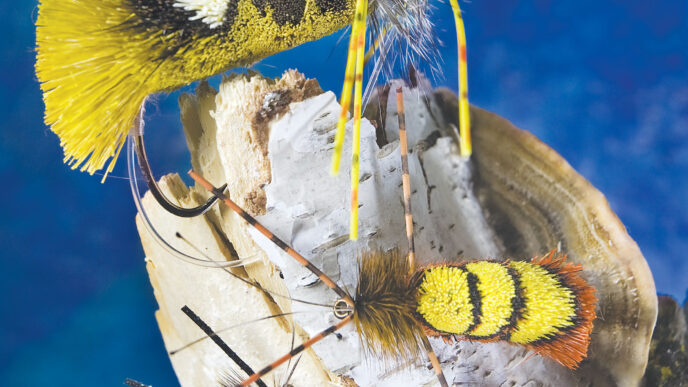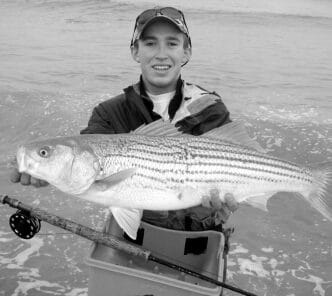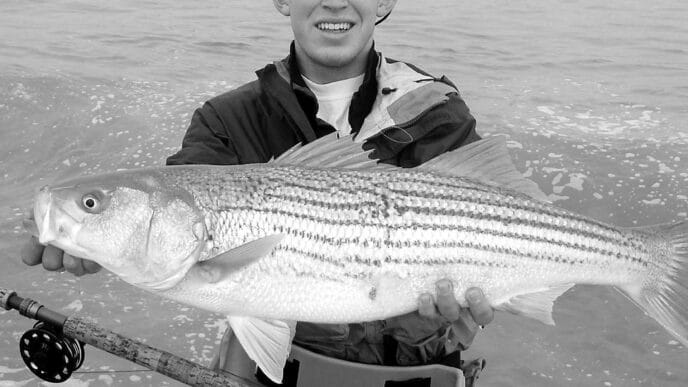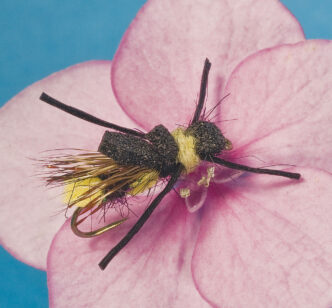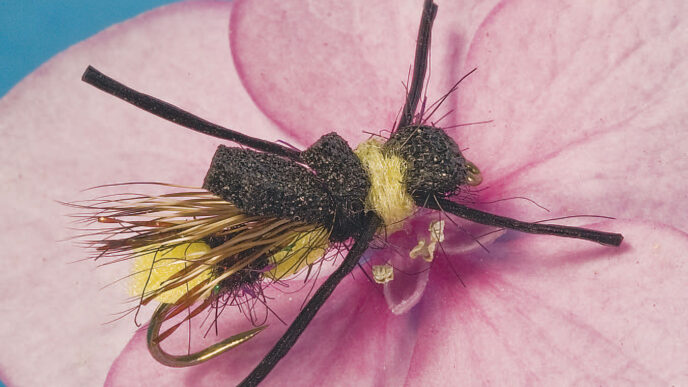It’s Thursday night. Your cell phone rings, and your angling buddy announces that he has been given an unexpected “gift of time” this weekend. He invites you to join him for fishing trip, and fortunately, you, too, are available. The two of you dis-
cuss some potential destinations, focusing on places that usually fish well this time of the year. But alas, this year is not the like the others — the fishing turns out to be slow, and on the long ride home, the two of you express regrets for not having considered other destinations more carefully or not having been ready for the unusual water and hatch conditions you encountered.
While chance will always be a factor in determining fishing success, in today’s Information Age, we have tools to help us minimize the element of chance and make better decisions about angling destinations and what to expect once we arrive. The Internet is an obvious source of prefishing information. Many websites provide valuable information about fishing conditions, water conditions, hatch activity, and productive fishing tactics. Having spent some time trolling those sites, I offer below a list of sources and some information about what they can provide
Sources
Online fishing reports come from a variety of sources. Some are obvious, such as the websites of fly shops and fishing guides and guide services, and, increasingly, blogs written by both guides and enthusiasts. Others include newspaper websites, sites maintained by local tourism associations, the sites of consolidators of online information, and commercial location-specific websites. This article includes each of those types of sources. They represent the majority of the reporting information on the Internet.
Caveats
The 24/7 convenience of the Internet is obviously a great asset and starting point to prepare for a trip. However, you will often want to contact a fly shop, guide, or other local source to obtain conversational clarifications or more up-to-date information.
Most of the information sources cited in this article provide a fly-fishing perspective. However, some provide a mix of fly-fishing and conventional-tackle advice and others are exclusively devoted to conventional-tackle angling. The perspective of anglers who don’t fish with fly tackle can be useful to the fly fisher, especially in helping to identify windows of opportunity on still waters that have turned over.
What to Look For
In my view, the following six factors determine the usefulness of online reports.
- Scope of Coverage. A few sources provide a broad sweep of the state. However, most are fairly regional in nature and focus on the fisheries about which they have local knowledge. Sometimes the broader sites trade off the quality of information for quantity. However, a few top sources manage to combine both depth and breadth of coverage. (In the tables that follow, for the primary waters covered, see the Index of Fisheries at the end of this article for a key to the abbreviations for specific fisheries.)
- Content. The best reports provide information on the quality of the fishing, water conditions, current hatches and their timing, and successful patterns and techniques.
- Frequency of Reports. The best reports typically update information at least every two weeks or, at minimum, as conditions warrant.
- Consistency of Schedule. Understandably, because their core business is something other than publishing online fishing information, many sources do not publish on a predictable schedule. The best sources often are those that maintain a schedule.
- Freshness of Information. This category is not the same as frequency. The best sources keep their content fresh, whereas others do not consistently update the content and at times post reports that have a fairly current date, but obviously stale information.
- Degree of Objectivity. The most valuable sources place the broader public interest in obtaining reliable information above their self-interest in promoting their services or tourist destination.
Other Useful On-Line Information
If you want to learn about stream flows, check out primary sources, including the California Department of Water Resources at html; the U.S. Geological Survey at http://waterdata.usgs.gov/ca/nwis/rt; and the Los Angeles Department of Water and Power at time/realtimeindex.htm. A very useful secondary source is time.php, a site designed for whitewater enthusiasts, but well-organized and useful for anglers. For maps, try Google Maps, including satellite images, at http://maps.google.com, or MapQuest driving directions at http://www.mapquest.com.
For weather conditions, check out the National Weather Service site at http://www.weather.gov; Yahoo weather at http://weather.yahoo.com; the Weather Channel at http://www.weather.com; or the Weather Underground at http://www.wunderground.com.
For a comprehensive review of fly-fishing podcasts, see “Catching the Best FlyFishing Podcasts,” by Pat Konoske, in the November/December 2008 issue of California Fly Fisher.
Explore and Organize
The world of online information is obviously very dynamic. In addition to the sources mentioned above, there are many other fishing-related resources to explore, including reports by conventional-tackle fishing guides and blogs by local fly-fishing personalities that can be very interesting, but are not primarily focused on current California fishing conditions. (For example, see Mikey Wier’s blog at http://www.moldychum.com/home-old/tag/mikey-weir). To find yet other interesting sites on fly fishing, start looking at some of the websites listed above and explore the links they provide. These links will surely take you to other interesting places.
As you expand your network of fishing-related sites, you will want to bookmark and organize your information. I recommend creating a “Fishing Report” folder and adding sites to the folder as you come upon ones you want to come back to in the future. As your folder expands, consider setting up subfolders as needed to support your personal style of organization. Above all, be sure to take advantage of this information and show up at the right place and right time with the right fly.











